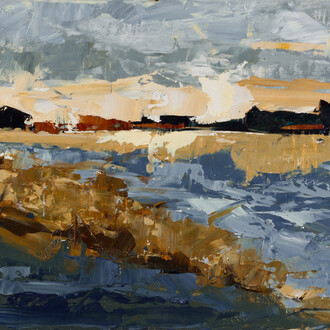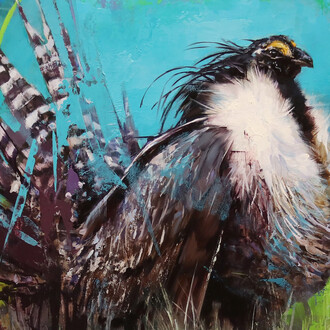Featuring paintings and sculptures of secular and religious subject matter from the CMA and an important private collection, Demons, ghosts, and goblins in Chinese Art explores the stories in which these creatures appear and the supernatural power that they exert. This exhibition presents three sculptures of fearsome guardian figures and more than a dozen Chinese paintings depicting demons and monsters in their role of either causing havoc on earth or acting as protectors against evil forces and harmful intruders. This free exhibition is on view September 8, 2024, through January 20, 2025, in the Julia and Larry Pollock Focus Gallery.
“Supernatural spirits exist in many cultures and civilizations”, said Clarissa von Spee, James and Donna Reid Curator of Chinese Art and Interim Curator of Islamic Art, Chair of Asian Art. “In China, demons and monsters exist in the Buddhist, Daoist, and Confucian worlds. Historic figures from these belief systems, such as Shakyamuni Buddha or the demon queller Zhong Kui, exert control and governance over demons and monsters, imposing order over chaos”.
The works of art on display include scrolls, earthenware, sculptures, and inks on paper that explore different contexts in which demons and monsters can be represented, both positive and negative.
One highlight is a pair of large tomb guardian figures moved from the Clara T. Rankin Chinese Art Galleries (239) into the exhibition space. Also on view is a handscroll from a private collection that, fully unrolled, is over 32 feet long. Paintings of the theme “Searching for Demons in Mount Guankou” are rarely seen and only a dozen are known to exist. Ten album leaves from the museum’s collection illustrating aspects of the same story are displayed alongside the scroll.
Monsters and supernatural spirits are often pictorialized in the context of festivals. Also featured is a finger painting of popular demon queller Zhong Kui that depicts him with an ugly face and disheveled beard, an appearance that was intended to scare evil spirits away. The figure’s ugliness is enhanced by the scratches, blotches, and ink dots achieved with the artist’s split nails, fingertips, and palm in place of a brush. Legends describe Zhong Kui as an unrecognized scholarly talent who once appeared in a dream of Tang emperor Xuanzong (reigned 712–56) to kill a harassing demon. Relieved of the demon, the emperor had Zhong Kui’s image painted after his dream, which became the model for all later depictions of the demon queller. In popular belief, Zhong Kui is a powerful guard against evil spirits, particularly on New Year’s Day and at the Double Fifth Festival, on the fifth day of the fifth lunar month, when his image is hung in households to ward off diseases and other misfortunes.














